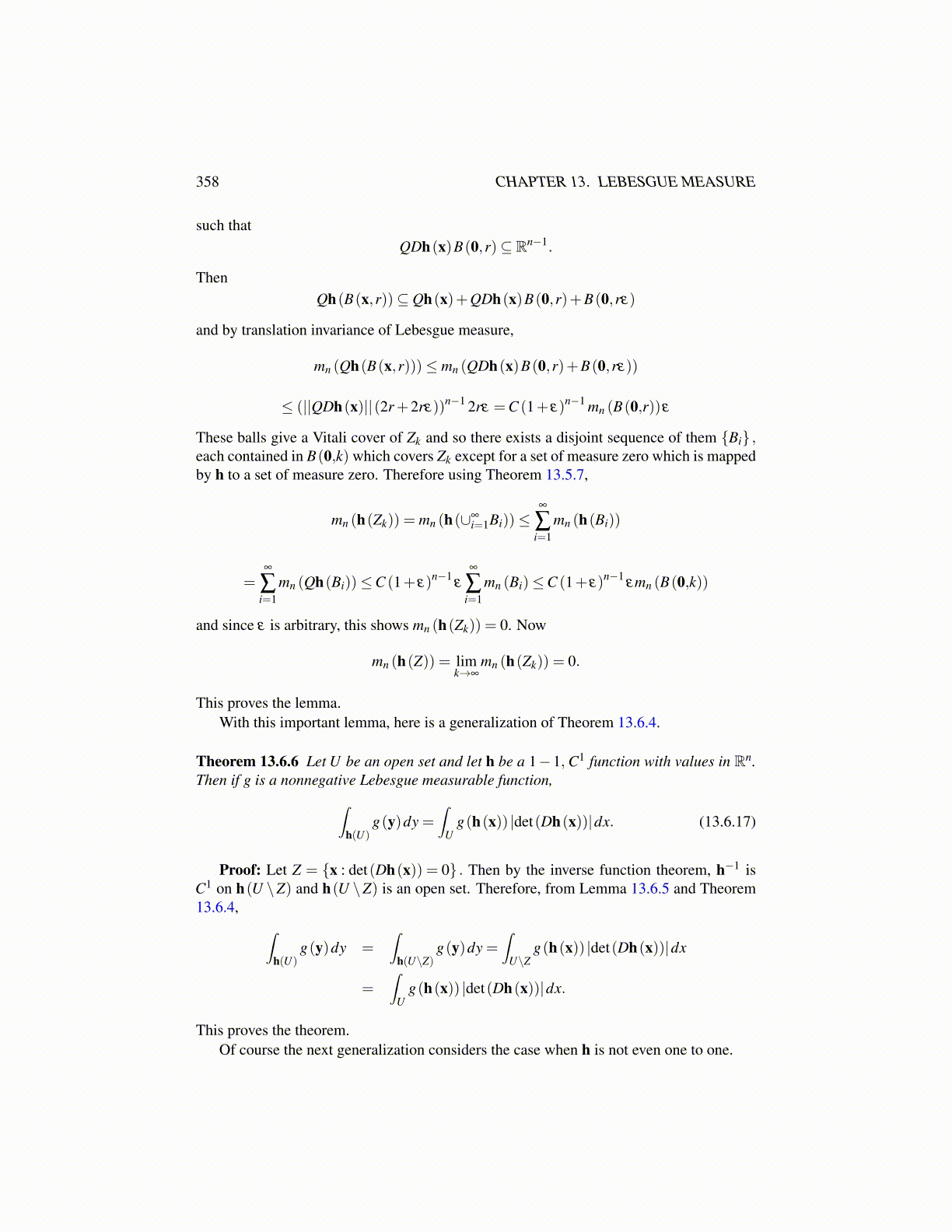
358 CHAPTER 13. LEBESGUE MEASURE
such thatQDh(x)B(0,r)⊆ Rn−1.
ThenQh(B(x,r))⊆ Qh(x)+QDh(x)B(0,r)+B(0,rε)
and by translation invariance of Lebesgue measure,
mn (Qh(B(x,r)))≤ mn (QDh(x)B(0,r)+B(0,rε))
≤ (||QDh(x)||(2r+2rε))n−1 2rε =C (1+ ε)n−1 mn (B(0,r))ε
These balls give a Vitali cover of Zk and so there exists a disjoint sequence of them {Bi} ,each contained in B(0,k) which covers Zk except for a set of measure zero which is mappedby h to a set of measure zero. Therefore using Theorem 13.5.7,
mn (h(Zk)) = mn (h(∪∞i=1Bi))≤
∞
∑i=1
mn (h(Bi))
=∞
∑i=1
mn (Qh(Bi))≤C (1+ ε)n−1ε
∞
∑i=1
mn (Bi)≤C (1+ ε)n−1εmn (B(0,k))
and since ε is arbitrary, this shows mn (h(Zk)) = 0. Now
mn (h(Z)) = limk→∞
mn (h(Zk)) = 0.
This proves the lemma.With this important lemma, here is a generalization of Theorem 13.6.4.
Theorem 13.6.6 Let U be an open set and let h be a 1−1, C1 function with values in Rn.Then if g is a nonnegative Lebesgue measurable function,∫
h(U)g(y)dy =
∫U
g(h(x)) |det(Dh(x))|dx. (13.6.17)
Proof: Let Z = {x : det(Dh(x)) = 0} . Then by the inverse function theorem, h−1 isC1 on h(U \Z) and h(U \Z) is an open set. Therefore, from Lemma 13.6.5 and Theorem13.6.4, ∫
h(U)g(y)dy =
∫h(U\Z)
g(y)dy =∫
U\Zg(h(x)) |det(Dh(x))|dx
=∫
Ug(h(x)) |det(Dh(x))|dx.
This proves the theorem.Of course the next generalization considers the case when h is not even one to one.